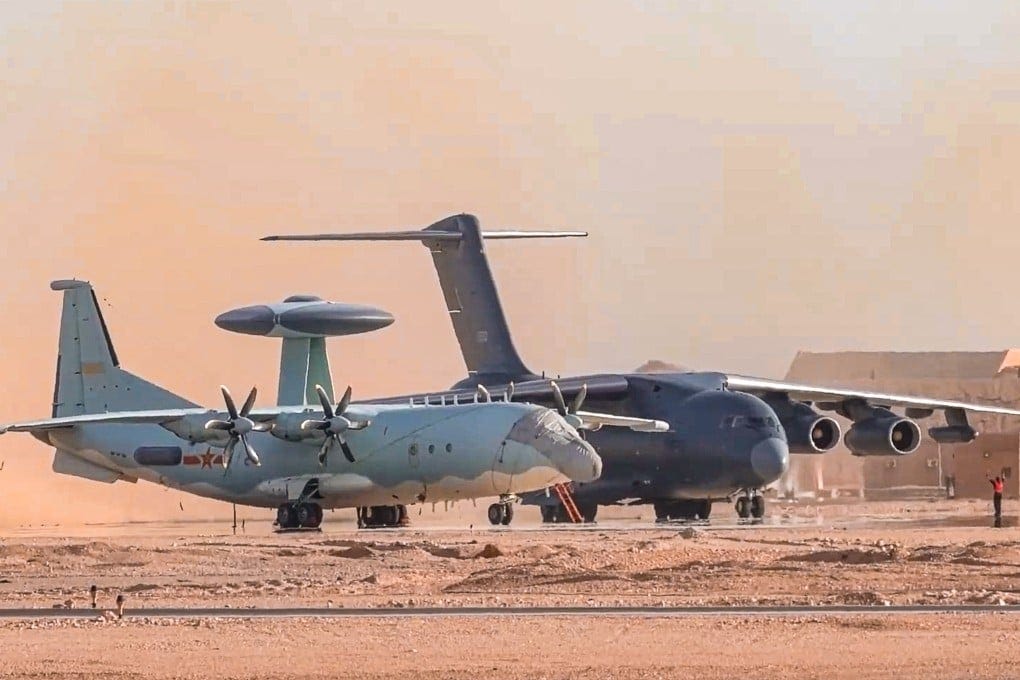Egypt has always tried to toe the proverbial line—balancing its strategic partners without fully aligning with any one camp. It is a hallmark of its military procurement strategy. Over the past several decades, Cairo has assembled a patchwork of defense systems from nearly every corner of the world: American F-16s, Russian MiGs, French Rafales, and aging Soviet-era weapons platforms. None of these systems talk to each other well. Interoperability is a persistent challenge. Each new acquisition adds another layer of complexity, requiring different maintenance systems, training programs, and doctrines.
Now enter China.
Egypt has invited the People’s Liberation Army Air Force (PLAAF) to conduct its first-ever joint air force drill on Egyptian soil, dubbed "Eagles of Civilization 2025." Alongside the Egyptian Air Force, China deployed some of its most advanced platforms: Y-20 strategic transport aircraft, J-10C multirole fighters, KJ-500 airborne early warning planes, and YU-20 aerial refueling tankers. Egypt welcomed it with open arms.
But this drill is only the latest milestone in a longer arc of deepening Sino-Egyptian defense ties. Over the past decade, Egypt has quietly acquired a suite of Chinese systems:
J-10CE fighter jets, with some reports suggesting Egypt may procure up to 40 of the advanced 4.5-generation aircraft.
Wing Loong drones, which have already been used in North Sinai operations and offer precision-strike capabilities.
HQ-9B surface-to-air missile systems, comparable in range and sophistication to Russia’s S-400.
K-8E trainer aircraft, co-produced in Egypt with Chinese support.
These platforms add new capabilities—but they also deepen the already fragmented mosaic of Egypt’s military landscape. Chinese systems aren’t plug-and-play with the American, Russian, or European hardware that Cairo already operates. Integrating them into Egypt’s existing infrastructure will be a significant logistical and operational challenge. But Egypt seems willing to accept that complexity. Why? Likely in the hope that closer ties with Beijing will open the door to next-generation aircraft, advanced surveillance systems, cutting-edge radar platforms, and a strategic partner less constrained by U.S. congressional politics or human rights conditionality. In short, better tech, fewer strings.
Over the past decade, Egypt has struggled to secure the U.S. systems it wants, often blocked by export controls or the threat of sanctions. France has filled some of the gaps, but even that has limitations. Beijing, on the other hand, is offering platforms quickly, with fewer questions asked.
Still, the risks are real. Cairo receives approximately $1.3 billion annually in U.S. military aid—a legacy of Camp David diplomacy that has helped Egypt modernize its armed forces and secure its regional posture. That assistance, however, comes with expectations, and deeper integration with Beijing may provoke concern in Washington. Already, Egypt’s defense relationship with the U.S. has faced strains. In 2015, Cairo lost eligibility for cash flow financing—a key privilege extended to America’s closest defense partners that allows them to purchase U.S. systems on long-term installment plans. The message from Washington was clear: Egypt was drifting too far.
Yet Cairo has shown a willingness to take risks. Its attempted acquisition of Russian Su-35s, despite the threat of CAATSA sanctions, signaled that Egypt is prepared to push the boundaries of traditional defense alignments. The same may now be happening with China. Egypt appears increasingly determined to deepen defense ties with Beijing. In doing so, it may be hoping to extract more advanced capabilities while avoiding overdependence on any one supplier.
But this balancing act is delicate. Cairo could easily cross a red line and lose access to U.S. financing. Still, Egyptian authorities may be drawing inspiration from Gulf states like Saudi Arabia and the UAE, who have so far managed to navigate parallel security partnerships with both the U.S. and China—though not without friction. Egypt, too, may be betting that it can walk the tightrope.
Finally, the recent military exercise with China may also be seen as a red flag in Tel Aviv. Both Egypt and China have walked a careful line with Israel, but the war in Gaza has strained those relationships. For Israel, what happens on its border - whether in the air or on the ground - is a point of national urgency. Joint drills between the Egyptian and Chinese militaries could be interpreted as a signal shift—or worse, as a subtle alignment at a time of heightened regional polarization. While Beijing traditionally avoids "picking sides," these optics matter. A growing Chinese defense presence in Egypt, particularly in the post-Gaza context, risks being perceived as an escalation or tacit endorsement of the “Arab” side (as one Israeli scholar reflected to me).




